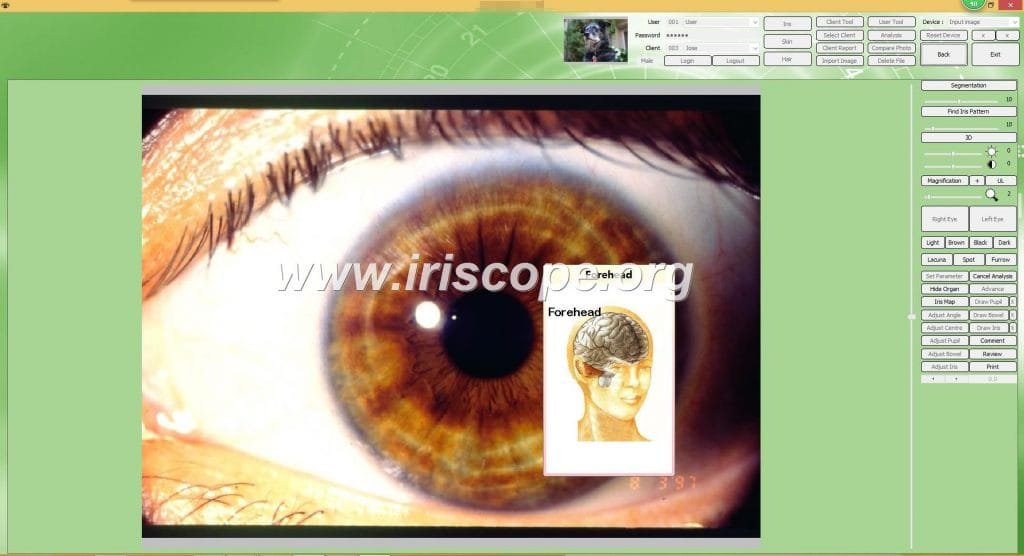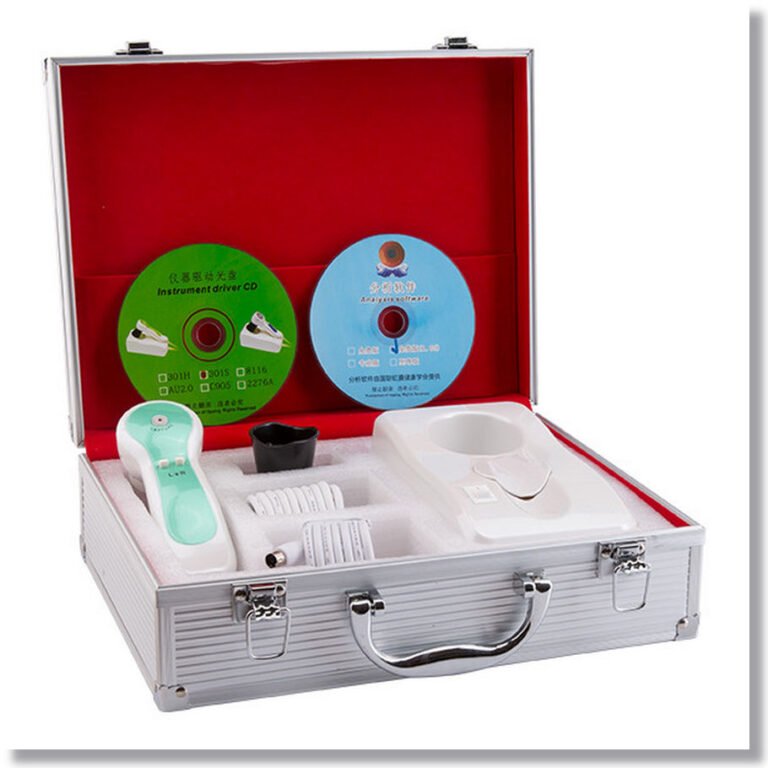10 migliori fotocamere per iridologia in Australia per fotocamere per iridologia

Iridology Camera Australia

Iridology Camera Australia

Iridology Camera Australia
Iridology Camera Australia
Please feel free to look at this website for our USB Digital iridology camera australia, Iridology camera, iris camera, eyology and sclerology USB system ccarry case To see our later website click the above button.Iridology Camera Australia
The EyeRonec Pebble Pro Iridology camera has been created for the NON TECHNICAL Naturopath and Natural Therapist, Iridologist and Herbalist.
The EyeRonec Pebble Pro Digital iridology camera australia takes only a little space on the desk and is very portable, Once your MAC or PC has the software installed all you need to do is plug the camera into the USB.
The EyeRonec Iridology iris camera needs No chin-rest, No dreaded flash, No ambient light problems, No heavy cases to carry,
The EyeRonec Pebble Prp sells for less then the price of other’s “camera only” prezzo.
The latest EyeRonec model Iriscameras have 8 light (for blue eyes) and 2+ side lighting LED’s for brown eyes.
The lights (white dots) are within the pupil zone ! No artifacts (white dots or streaks) in the iris so pictures are better than images taken with”open” system cameras
How To Take Your Iris Photos by iridology camera australia
To take the best photos for your reading, set your camera to MACRO and try, if possible, to use natural, daytime indoor light with a flash. Set the size of the photo for a higher resolution, with a minimum of 2.5M (2208 x 1248). 4.5M (2784 x 1568) is best.
Step 1: Taking Your Iris Photos with a Digital Camera
Imposta la fotocamera su Impostazione macro.
Aumenta la risoluzione a 4,5 M (2784 x 1568).
Attiva Flash.
Utilizzare la luce del giorno interna.
Stare lateralmente da qualsiasi finestra (rivolgersi alla finestra causerà abbagliamento).
Have someone else hold the camera or use a tripod and timer.
Tieni aperte le palpebre superiore e inferiore per rendere visibile l'intera iride.
Scatta una foto di ciascuna iride alla volta.
Tieni l'occhio vicino alla fotocamera. Con l'impostazione Macro, puoi trovarti a 4-5 pollici dall'obiettivo.
Step 2: Checking Your Photos for Lighting and Clarity
Controlla la foto sul mirino della tua fotocamera. Usa la funzione zoom per vedere l'iride.
Be sure the iris is clear; otherwise try again.
Assicurati che non ci siano occhi rossi; altrimenti attiva la "riduzione occhi rossi" e riprova.
Assicurati che l'intera iride sia visibile; altrimenti riprova.
Assicurati che non ci siano riflessi significativi sull'iride; altrimenti allontana leggermente il corpo da qualsiasi finestra e riprova.

Iridology Camera Australia

iridology camera lens

Step 3: Emailing Your Final Iris Photo Results
È possibile ritagliare le foto in modo che sia visibile solo l'occhio per ridurre le dimensioni del file.
Se questo è troppo lavoro, invia semplicemente l'intera foto via e-mail.
Puoi inviare 3-5 immagini dell'occhio sinistro in un'unica e-mail.
Puoi inviare 3-5 immagini dell'occhio destro in un'altra email.
Using a Digital Camera: Video Instructions on How to Take Iris Photos
Using an iPhone: Video Instructions on How to Take Iris Photos
Esempi di invii di foto di Iris non accettabili
NO! Entrambi questi esempi presentano un riflesso significativo, rendendo illeggibili parti dell'iride
In the first example above, the person was likely facing a window, causing the glare to appear in the iris. The solution: Turn slightly away from the window and try again.
In the second example, it is likely that this photo was taken at night or in a room with no windows and only overhead light. Due to the darker light in the room, the light is refracting off the iris, causing significant glare and making the photo blurry. The solution: Take the photo in indoor daylight with no overhead lighting. Side lighting is usually ok.
Un piccolo riflesso nella pupilla (il punto nero al centro dell'iride) va bene.
NO! Non guardare direttamente l'obiettivo della fotocamera crea un'immagine distorta dell'iride
Nei due esempi precedenti, è molto probabile che le persone stiano cercando di scattare le foto da sole, quindi guardano inavvertitamente la fotocamera mentre provano a scattare la foto.
The solution: Have someone else hold the camera steady for you or use a tripod with a timer.
NO! In queste foto, la parte superiore e/o inferiore dell'iride è coperta
When taking your photographs, check to see that the entire color portion of the eye is visible, especially the top and bottom. If you tend to have ‘droopy’ eyes, just gently pull the skin away from the eye using your thumb and forefinger.
Esempi di invii di foto di Iris accettabili
SÌ!! Foto perfette: nota il flash all'interno della pupilla e l'intera iride visibile
SÌ!! Sebbene le foto non siano perfettamente nitide, questi 2 esempi sono ancora leggibili
SÌ!! Foto molto buone: iride completa visibile, chiara e facile da leggere per l'iridologia
SÌ!! Foto perfette: nota il flash all'interno della pupilla e l'intera iride visibile
SÌ!! Foto perfette: nota il flash all'interno della pupilla e l'intera iride visibile
Scopri cosa aspettarti dalla tua analisi iridologica su Iridology Explained.
Trova le risposte a qualsiasi domanda aggiuntiva sull'Iridologia e su come funziona nelle Domande frequenti su Iridologia.
Inizia ora! Fissa il tuo appuntamento online su Prenota la tua consulenza iridologica.
L’iridologia non può diagnosticare una malattia specifica.

Software per telecamera per iridologia

Software per telecamera per iridologia

Software per telecamera per iridologia

Software per telecamera per iridologia



Iridology Definition
Iridology, also called iris analysis or iris diagnosis, is the study of the iris (the colored part of the eye). Iris “readings” are made by iridologists to assess a person’s health picture (physical, emotional, mental, and spiritual) and guide them to take measures to improve their health.Iridology: Iridology is the analysis of the iris, which is the colorful area of the eye that surrounds the pupil. By analyzing the iris, a person’s level of health and specific areas of nutritional deficiency can be identified. This allows appropriate remedies to be recommended.The International Iridology Practitioners Association (IIPA) states that iridology is “the study of the iris, or colored part, of the eye. This structure has detailed fibers and pigmentation that reflects information about our physical and psychological makeup.
It identifies inherited dispositions (how our body reacts to our environment and what symptoms are most likely to occur), risks (what areas or organ systems are more likely to have symptoms) and future challenges (where we are likely to have more problems as we age). Iridology helps identify inherited emotional patterns which can create or maintain physical symptoms, as well as identify lessons or challenges and gifts or talents available to us.”







































